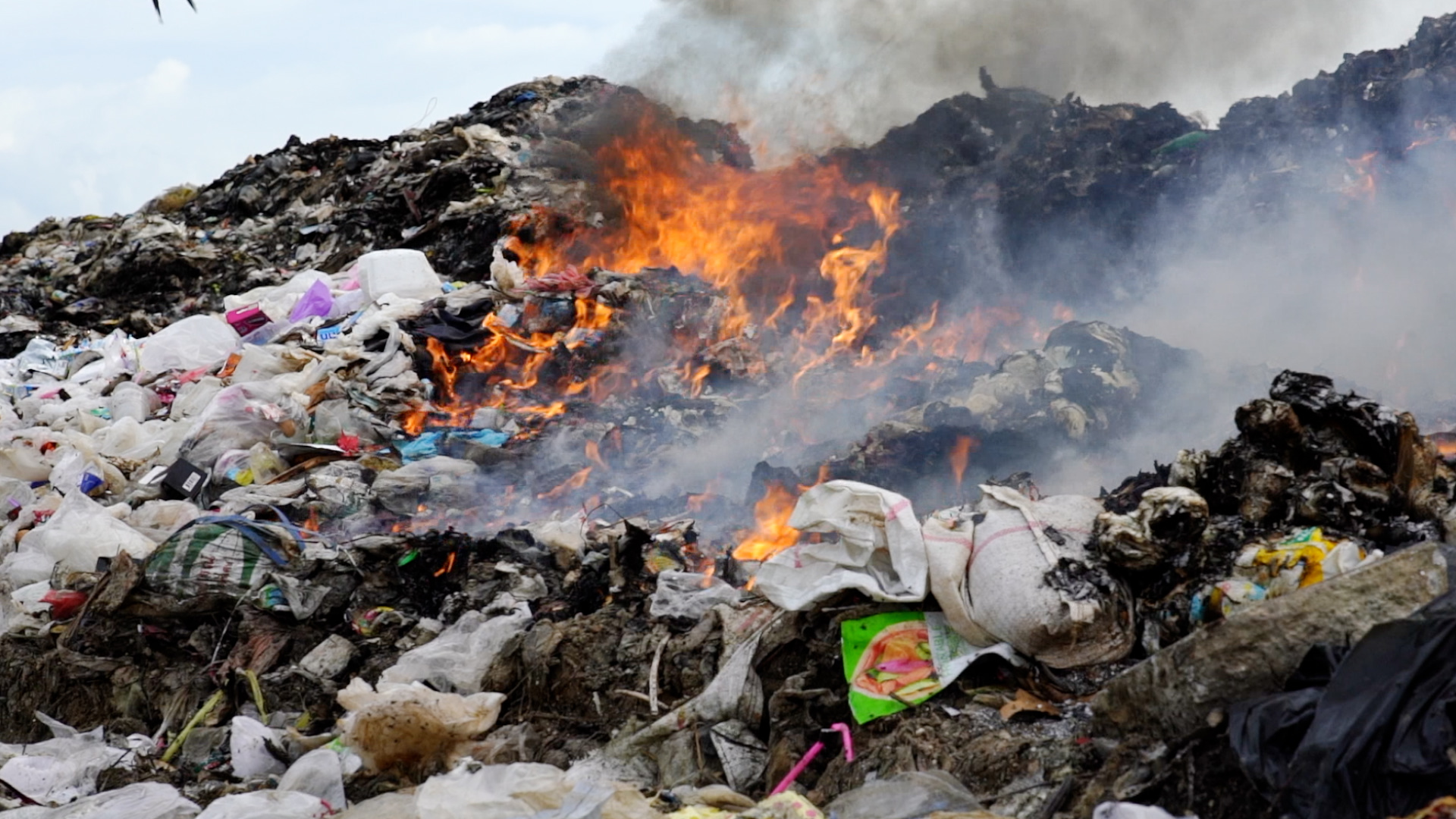
[JACK ALYMER]
EVERY YEAR WE THROW AWAY A TON OF TRASH.
MORE LIKE TWO BILLION TONS – GLOBALLY.
THE MAJORITY ENDS UP IN LANDFILLS OR OPEN DUMP SITES.
THERE IT SLOWLY DECOMPOSES.
IN SOME CASES TAKING CENTURIES TO BREAK DOWN.
AND WHILE IT SITS – IT SPITS OUT METHANE AND OTHER GASSES.
ON PAR WITH WHAT THE WORLD’S COAL MINING INDUSTRY GENERATES EACH YEAR.
BUT AT LEAST WITH COAL, WE GET ENERGY OUT OF THE POLLUTION IT CREATES.
WITH TRASH, NOT SO MUCH. ALTHOUGH, THAT COULD BE CHANGING.
A SMALL ISLAND OFF THE COAST OF SOUTHERN ENGLAND IS HOME TO A NEW WASTE-TO-ENERGY PLANT.
SO FAR IN TESTING, ITS SHOWN THE ABILITY TO PRODUCE ENOUGH ENERGY TO POWER 7,000 HOMES FOR A WEEK.
BY BURNING TRASH LIKE PAPER, PLASTIC, AND WOOD, THE PLANT’S DEVELOPERS BELIEVE THEY’RE CREATING A GREENER METHOD OF WASTE DISPOSAL.
[IT’S ALWAYS SUNNY]
“How is burning trash green?”
[JACK ALYMER]
FOR THOSE WHO MIGHT THINK THIS IS A DUMPSTER FIRE OF AN IDEA- LET’S BREAK IT DOWN.
THE HEAT PRODUCED FROM BURNING TRASH IS THEN USED TO WARM UP WATER UNTIL IT BECOMES STEAM.
THAT STEAM IS THEN USED TO TURN TURBINE BLADES, GENERATING POWER.
THE PROCESS WOULD ALSO HELP REDUCE THE AMOUNT OF PHYSICAL SPACE TRASH TAKES UP.
CONVERTING A TON OF GARBAGE INTO ENERGY REDUCES IT TO AS LITTLE AS JUST 300 POUNDS OF ASH.
BUT, THE WASTE TO ENERGY PROCESS ISN’T JUST GENERATING POWER, ITS PRODUCING SOME CONTROVERSY AS WELL.
[Silicon Valley]
“No, we don’t burn trash in this country.”
[JACK ALYMER]
INCINERATING TRASH RELEASES TOXIC CHEMICALS AND POLLUTANTS –
WHICH IS WHY MULTIPLE ENVIRONMENTAL GROUPS HAVE ACCUSED THIS ENERGY PRODUCTION METHOD OF GREENWASHING.
IN FACT, STUDIES HAVE SHOWN THAT POLLUTION FROM BURNING WASTE CAN MAKE ITS WAY INTO THE AIR, WATER, AND FOOD SUPPLY OF LOCAL COMMUNITIES. YOU CAN PROBABLY GUESS THE NEGATIVE HEALTH IMPLICATIONS.
OTHER RESEARCH HAS FOUND THAT, WHILE, SURE, THE WASTE TO ENERGY PROCESS IS RESPONSIBLE FOR SOME HARMFUL EMISSIONS, IT’S STILL CLEANER THAN GETTING POWER FROM COAL OR OIL.
CLIMATE EXPERTS ARGUE INVESTING IN ANY INFRASTRUCTURE THAT PRODUCES POLLUTION IS LIKE PUTTING A BANDAID ON A BULLET WOUND AND CAN BE COUNTERPRODUCTIVE FOR THE GREEN ENERGY TRANSITION.
[IT’S ALWAYS SUNNY]
“That’s the exact opposite of green, Charlie.”
“Oh, I’m sorry. I can put the trash into a landfill where it’s gonna stay for millions of years.”
[JACK ALYMER]
WHILE TESTING CONTINUES IN ENGLAND TO ENSURE THE WASTE TO ENERGY FACILITY THERE MEETS OPERATIONAL STANDARDS, THIS TECHNOLOGY IS STILL GENERATING TRACTION ELSEWHERE.
DEVELOPERS IN DENMARK ARE DEVELOPING A SYSTEM WITH EMISSIONS THAT ARE ALMOST ENTIRELY WATER VAPOR AND CARBON DIOXIDE.
WASTE TO ENERGY IMPROVEMENTS LIKE THESE COULD HELP THE INDUSTRY GROW.











